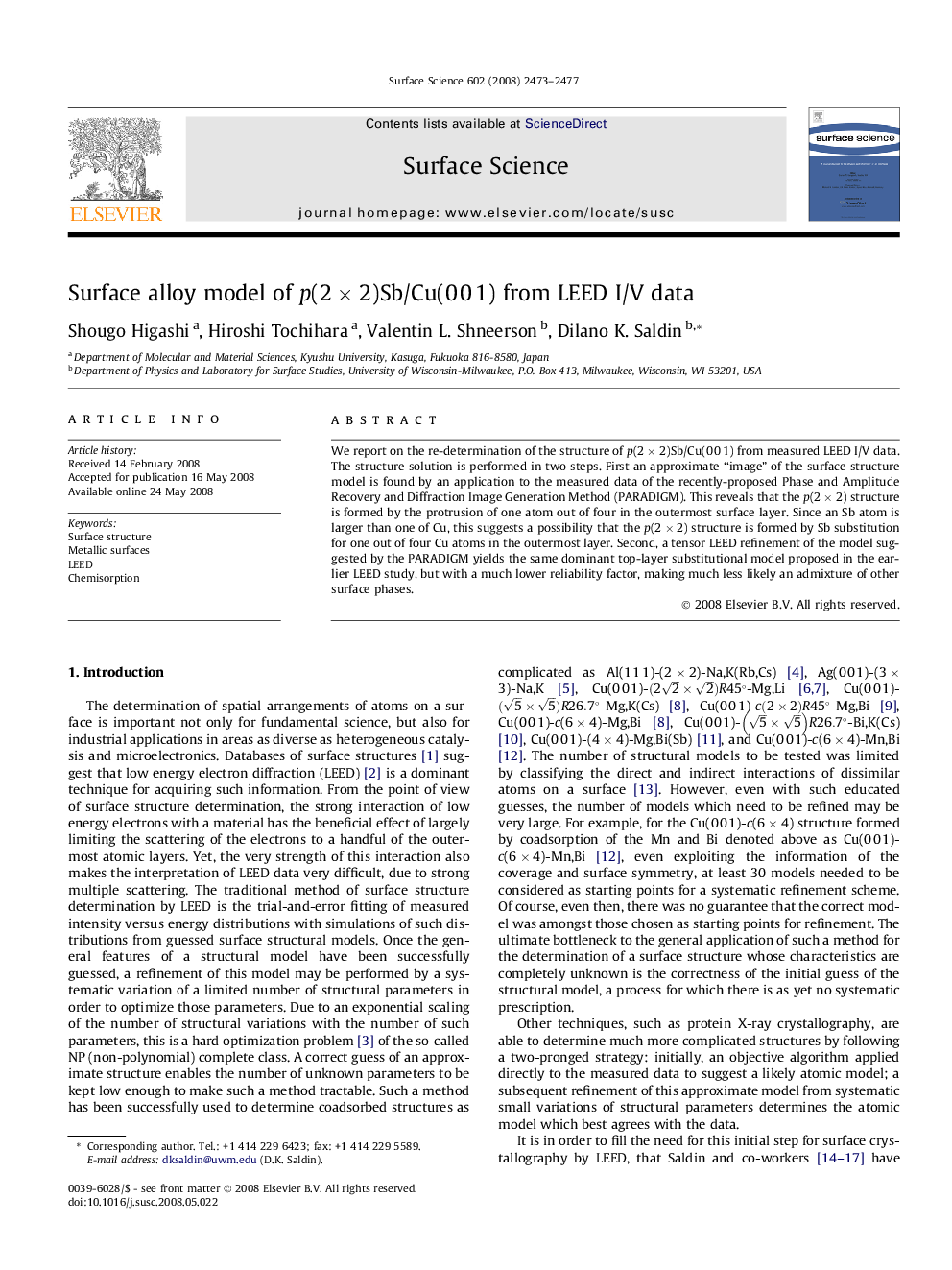| Article ID | Journal | Published Year | Pages | File Type |
|---|---|---|---|---|
| 5425085 | Surface Science | 2008 | 5 Pages |
We report on the re-determination of the structure of p(2Â ÃÂ 2)Sb/Cu(0Â 0Â 1) from measured LEED I/V data. The structure solution is performed in two steps. First an approximate “image” of the surface structure model is found by an application to the measured data of the recently-proposed Phase and Amplitude Recovery and Diffraction Image Generation Method (PARADIGM). This reveals that the p(2Â ÃÂ 2) structure is formed by the protrusion of one atom out of four in the outermost surface layer. Since an Sb atom is larger than one of Cu, this suggests a possibility that the p(2Â ÃÂ 2) structure is formed by Sb substitution for one out of four Cu atoms in the outermost layer. Second, a tensor LEED refinement of the model suggested by the PARADIGM yields the same dominant top-layer substitutional model proposed in the earlier LEED study, but with a much lower reliability factor, making much less likely an admixture of other surface phases.
